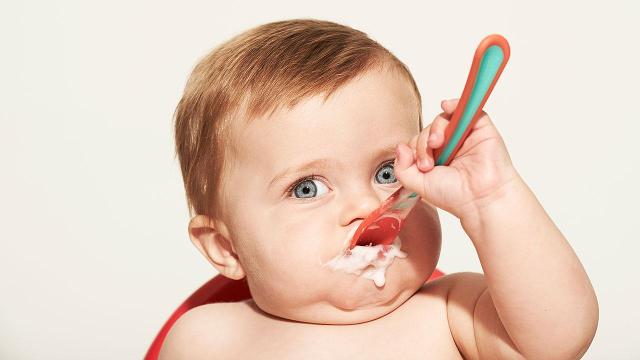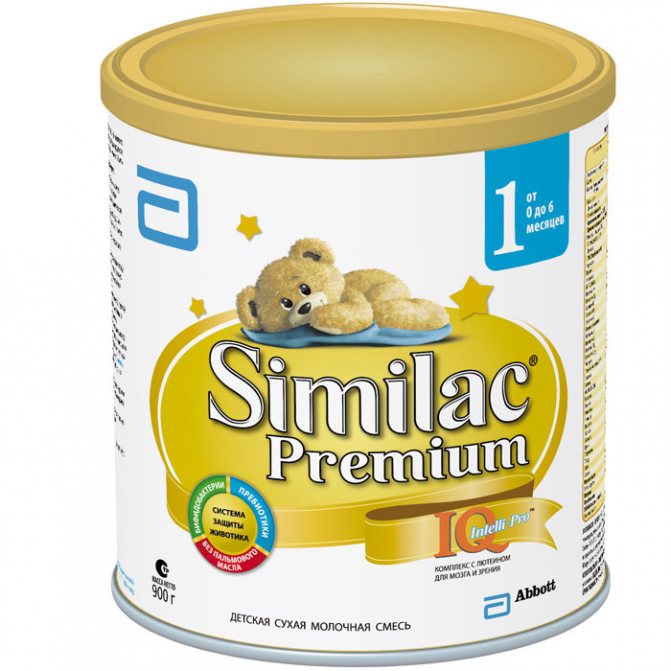The question of how much milk a newborn needs per feeding worries every mother, since the harmonious development of the baby is closely related to proper nutrition. To do this, every mother needs to know the norm, which will not harm, but only contribute to its rapid and correct development. The first month the baby may cry often because he is suffering from colic, then he starts teething. This period often causes the mother to feel that the child does not have enough food, and she tries to calculate the correct number of grams. How to correctly determine that a newborn is really hungry, and what is its norm?
Features of breastfeeding
As a rule, the most difficult time when it comes to feeding is the first week after childbirth. At this time, mother and child are just learning to understand each other. But there is no doubt that breast milk is the best food for a baby. This product is naturally perfect and has everything you need at every step.
Breastfeeding is beneficial for both baby and mother:
- it helps the baby receive the substances necessary for growth, development and immunity and simply satisfy hunger;
- promotes active contraction of a woman’s uterus (under the influence of sucking movements) and a faster recovery process after childbirth.
About colostrum
Newborns eat little; their sucking reflex is just developing and begins to be used “in practice.” In addition, a woman does not produce milk immediately. Colostrum is produced in the mammary glands at the end of pregnancy and in the first hours after birth. This is not exactly milk, it even looks different from mature milk, and its chemical composition is similar to blood. This is a very valuable product. It is high in fat and contains immunoglobulins and antitoxins, which strengthen the immune system and protect the baby’s body from infections. After a few days, transition milk replaces colostrum. It is lighter, but also quite oily.

It is important!
A mother should not worry that her child remained hungry, even if she put him to the breast 10 times, but it seems that he did not eat almost a drop. The size of a newborn's stomach is very small, so he eats only about 10 ml at one feeding. Thus, the baby can drink up to 100 ml throughout the day.
On average, milk comes in 3–4 days after birth and its quantity gradually increases. The baby's stomach also grows. This means that the amount of milk consumed also increases. So, on the first day a newborn can drink 10 ml per feeding, on the second day - 20 ml, and on the third day - 30 ml. But remember that each organism is individual and there are no strict limits here. However, if by the 4th–5th day of life the child’s body weight does not increase, but only decreases (by more than 8%), then this requires the attention of a specialist.
How much milk does a breastfeeding baby need?
It is very difficult to answer this question with an exact figure, since different children consume different amounts of milk per reception. The indicators are approximately the same, but you should be guided by the child’s mood and behavior. During the first days, he should receive a sufficient amount of colostrum, as it protects him from diseases and allergies. The mother may have a little of it, but this is normal, since colostrum is very nutritious and will be enough to provide immunity to the child.
On average, the normal amount of milk that a newborn eats during one feeding is approximately 15 ml. Then its volume increases: on the second day he eats two or three spoons at a time, on the third - 35 ml, on the fourth - 50, and so on. By the end of the second week, he eats half a liter per day. And a six month old is about a liter.
The mother may not produce milk in the first days or may appear on the second or fourth day. Before this, the baby receives only colostrum. How much does it cost to give milk in the first days? The answer is simple - as much as he wants.
For a one-month or two-month-old baby, the norm is 1/5 of his weight. But the question of the quantity required for it is purely individual. Milk may be full-fat, in which case the child will need less of it to be satisfied. Many mothers worry that they may not be able to feed their baby, so they use formula. This does not always need to be done.
How to calculate the amount eaten
In terms of measuring the amount eaten, artificial feeding seems simply ideal. Here is a bottle with a scale, here is water, here is a measuring spoon. However, in terms of its benefits, formula milk will never compare with breast milk. And besides, taking measurements is not as difficult as it seems at first glance. The baby just needs to be weighed before and after feeding on a baby scale. To ensure the accuracy of the result, you need to weigh yourself several times a day. If the baby’s health is not in danger, he does not look thin and pale, he is developing according to his age, and the mother has enough milk, then a monthly weighing in the clinic is usually enough.
Lure
From 6 months, complementary foods are usually introduced; milk or formula gradually ceases to be the baby’s main food. When introducing complementary foods, you need to supplement with milk after meals, while reducing the portions of milk. Gradually, complementary feeding becomes the main food, and the child eats breast milk or formula before bed and at night. Meals become five times a day, a menu is drawn up, which should include vegetables, fruits, kefir, cottage cheese, yolk, meat, fish, butter. Read more about complementary feeding in our article “Introducing complementary feeding.”
Any complementary foods are introduced 1 tsp. for the first time, increasing by 2 times every day. Gradually the portion increases to 120-150 g, for example, when introducing zucchini puree, on the first day give 1 tsp. and watch the baby. If everything is in order, there is no allergy, the stool does not become sharply liquid and there is no constipation, then on the second day you already give 2-3 tsp. Watch the child again and, if everything is in order, on the third day you give 5-6 tsp. Thus, increase the portion to 120-150g. After meals, you can supplement with milk or formula.
Below is a table that shows how much complementary feeding to give to a child up to one year old.

Feeding mode
For breastfed children, there is a rule - to put the baby to the breast on demand. Previously, it was believed that it was necessary to maintain an interval of 3 hours, but now pediatricians agree that breaks between feedings can be 1.5–2 hours. This does not mean at all that the baby will overeat.
Video: Does a child get enough food in the first months of life? Author: pediatrician, Ph.D. Komarovsky E.O.
The duration of one feeding is usually 15–30 minutes. Although there are deviations from the norm. For example, a woman has a lot of milk, and the baby is full in 5–10 minutes. Or, on the contrary, little milk comes in, and the baby can suck out the rest for a long time. Some babies simply like the process of sucking and use their mother's breast as a pacifier.
How much should a newborn on artificial nutrition eat?
For children who are fed a special adapted formula, they receive it strictly according to the schedule. Pediatricians insist that you cannot overfeed a child, so they receive baby food 7–8 times a day with an interval of 3–3.5 hours between feedings.
At night, the interval between feedings can increase to 5–6 hours. If the baby does not wake up and does not ask for food, then the nutrients he received before bed are enough for him. You shouldn't wake him up.
Some mothers, however, overfeed their babies: as soon as the baby starts crying, and the time to eat the formula has not yet come, they cannot stand it and feed the babies ahead of time. Doctors explain that it is much easier for a baby to get nutrition from a bottle than from the mother’s breast. Therefore, the baby eats not as much as he needs to satisfy his hunger, but as much as his mother gives in a bottle. Overfeeding is fraught with many digestive problems, so pediatricians insist that parents monitor the feeding schedule of bottle-fed children.
How to calculate the amount of formula for a child
First of all, you need to consult your doctor and study the information on the packaging of the mixture. There must be instructions and the amount of powder for children of different ages. However, there are special formulas, using which you can quickly find out how much mixture you need to give your baby so that he eats, but does not overeat.
For children in the first 10 days of life, you can calculate the amount of formula using the Finkelstein or Filatov methods, which we discussed above.
Table: How much formula does a 4 kg child need in the first 10 days of life, according to Filatov’s method
| Day | Daily formula intake, baby is fed 8 times a day | Amount of formula per feeding |
| 1 | 80 | 10 |
| 2 | 160 | 20 |
| 3 | 240 | 30 |
| 4 | 320 | 40 |
| 5 | 400 | 50 |
| 6 | 480 | 60 |
| 7 | 560 | 70 |
| 8 | 640 | 80 |
| 9 | 720 | 90 |
| 10 | 800 | 100 |

When feeding with formula, the dosage must be strictly observed.
But the most popular method by which the required amount of formula is determined is based on the child’s weight, which changes every month.
Table: Determining the volume of formula for children under one year of age
| Age, months | Amount of formula per day, based on the child’s weight |
| from 10 days to 1.5 | 1/5 |
| 1,5–4 | 1/6 |
| 4–6 | 1/7 |
| 6–8 | 1/8 |
| 8–12 | 1/9 |
The resulting volume of the adapted mixture must be divided by the number of feedings to calculate the volume sufficient for one meal.
Video: How much formula should be given to a baby
How many cans of formula should you buy to feed your baby?
This question worries many parents, because formula is not cheap, but if a woman cannot breastfeed, there is no other choice. It is impossible to say exactly how many days an average jar of mixture weighing 400 grams will last. The fact is that it depends on the baby’s appetite: the older the child, the more formula he eats.
The amount of mixture that needs to be diluted in water is determined using a measuring spoon. One level spoon contains approximately 4.3 grams of powder.
Table: Volume of formula for babies of different ages (in weeks and months)
| Baby's age | Number of measuring spoons | Required amount of water, ml | Volume of the resulting mixture, ml | Number of feedings in 24 hours |
| from birth to two weeks | 3 | 90 | 100 | 8 |
| 2–6 weeks | 6 | |||
| 6–8 weeks | 4 | 120 | 135 | 6 |
| 2–3 months | 6 | |||
| 3–4 months | 5 | 150 | 165 | 5–6 |
| 4–5 months | 4–5 | |||
| 5–6 months | 6 | 180 | 200 | 3–4 |
| 6 months and older | 2–3 |
A 400 gram jar of the mixture contains about 93 scoops of powder. 24 spoons of mixture are needed per day to feed a newborn baby. Thus, provided that a baby receives eight meals a day from birth to two weeks, one can of formula will last for three and a half days. And for a one-month-old baby, one package is enough for 5 days. Parents need to buy six cans of baby food per month.

The older the child gets, the more cans of formula he will need per month.
What is important to consider
At first, mother and baby are just getting used to the changes taking place, so the feeding regimen may not be ideal. However, you should adhere to the following rules.
- In the first couple of weeks, a lot of dedication is required from the woman, because the interests of the child in satisfying hunger come to the fore. You cannot deny your baby food, even if it costs a sleepless night.
- If there is any doubt that the child is undernourished or overfed, it is better to start monitoring the frequency of feedings. So, you need to note the time at which the baby was really hungry, and note the intervals between feedings. This information may also be useful at an appointment with a pediatrician.
- It is impossible to establish a clear feeding regimen, as with artificial feeding, especially in the first weeks after birth. It is highly not recommended to maintain intervals of more than 2–3 hours during the day and 3–4 hours at night.
- There is no need to try to force feed your baby. He is still too young to realize the need for food, and is guided solely by his feeling of hunger. If your child persistently refuses to breastfeed, you should try offering him something to eat a little later. If the interval is too long, it is better to consult a specialist for advice.
- It is important to ensure that your baby latch onto the breast correctly. His mouth should capture not only the nipple, but also the areola. This way, milk will flow correctly into the mouth, and the woman will reduce the risk of cracked nipples.
- It is not recommended to give pacifiers and bottles to breastfed babies. Such products can reduce the intensity of sucking movements.
- It is better to give the baby only one breast at one feeding. In the mammary gland, foremilk is formed, with which the baby quenches his thirst, and hindmilk, with which he “gets enough”, since it is more nutritious in composition.
- After each feeding, you need to hold the baby in a column for about 10 minutes. This helps free the tummy from air and excess milk.
As a rule, with a normal feeding regimen and a sufficient amount of milk from the mother, by the month the baby’s weight increases by 500–600 g.

How can you tell if your child is full?
There are standard signs that indicate that the newborn is eating the required amount of food:
- calm behavior;
- deep sleep;
- sufficient weight gain every month;
- regular urination and bowel movements.
The main thing is to remember that each child is individual and requires appropriate treatment. Your little miracle knows better than anyone else when and how much it needs to eat. Be careful, be patient, and over time the feeding regime will improve itself.
Pediatrician of the 2nd category, allergist-immunologist, graduated from the Belarusian State Medical University of the Federal Agency for Health and Social Development. Read more »
Features of artificial feeding
We figured out how much a breastfed newborn eats at one feeding. Now let's consider a situation where a mother is unable to breastfeed her baby. In this case, it is necessary to select a high-quality milk formula that will cover the nutritional needs. A pediatrician should help in this matter. The doctor will always take into account the child’s health characteristics and will be able to recommend a regular or medicinal product. Do not forget that when breastfeeding the baby puts in more effort. He drinks the milk gradually and feels full. When feeding with formula, a strict dosage is needed, since usually satiety does not come immediately, and the baby may require supplements that he does not really need (the feeling of hunger should disappear after a few minutes).











